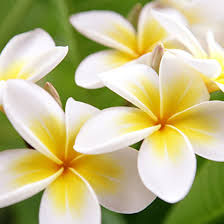**The Popularity of Porcelain Flowers in Culture and Art**

Porcelain flowers, renowned for their delicate beauty and intricate craftsmanship, hold a special place in the realms of culture and art, captivating admirers with their timeless elegance and symbolic significance.
1. **Cultural Significance**: Throughout history, porcelain flowers have played a significant role in various cultures, where they are often associated with auspicious meanings and symbolic interpretations. In Chinese tradition, certain flowers hold deep cultural significance and are revered for their beauty and symbolism. For example, the peony symbolizes prosperity and wealth, while the lotus represents purity and enlightenment. Similarly, in Vietnamese culture, porcelain flowers are treasured for their aesthetic beauty and spiritual symbolism, often used in rituals, ceremonies, and celebrations to honor ancestors and convey heartfelt sentiments.
2. **Artistic Inspiration**: Porcelain flowers have long been a source of inspiration for artists and artisans, who have sought to capture their natural beauty and intricate details through various artistic mediums. From traditional paintings and sculptures to contemporary installations and mixed-media creations, porcelain flowers have been depicted in countless artistic interpretations, each reflecting the unique style and vision of the creator. Artists draw upon the rich symbolism and cultural significance of porcelain flowers to convey themes of love, beauty, resilience, and transformation, infusing their work with layers of meaning and emotion.
3. **Decorative Ornamentation**: Porcelain flowers are also widely admired for their decorative appeal, adorning palaces, temples, gardens, and households as symbols of refinement and sophistication. Whether displayed as standalone sculptures, incorporated into architectural elements, or arranged in elaborate floral compositions, porcelain flowers add a touch of elegance and charm to any environment. Their delicate forms and vibrant colors serve as focal points that capture the imagination and evoke a sense of wonder and admiration.
4. **Collector’s Items**: Porcelain flowers are highly prized as collector’s items, sought after by enthusiasts and connoisseurs for their rarity, craftsmanship, and historical significance. Antique porcelain flowers, crafted by master artisans of bygone eras, are particularly valued for their exquisite beauty and cultural heritage. Collectors avidly seek out these rare treasures, often acquiring them through auctions, galleries, and antique markets, where they are celebrated as tangible reminders of a bygone era and cherished as valuable additions to private collections.
In summary, the popularity of porcelain flowers in culture and art transcends geographical boundaries and spans centuries, reflecting their enduring appeal and timeless beauty. From their rich cultural symbolism to their artistic inspiration and decorative allure, porcelain flowers continue to captivate hearts and inspire admiration as cherished treasures of artistic craftsmanship and cultural heritage.
**The Influence of Porcelain Flowers on Culture and Art**
The prevalence of porcelain flowers in both cultural practices and artistic endeavors is a testament to their enduring allure and significance. Across diverse societies and artistic movements, these delicate blooms have left an indelible mark, shaping perceptions of beauty, spirituality, and craftsmanship.
1. **Cultural Significance**: Porcelain flowers have long held symbolic importance in various cultures, where they are revered for their associations with prosperity, purity, and spiritual enlightenment. In Chinese culture, for instance, porcelain flowers are imbued with auspicious meanings and are often used in rituals and celebrations to invoke blessings and good fortune. Similarly, in Western societies, porcelain flowers are cherished as expressions of love, remembrance, and reverence, adorning graveyards, memorials, and religious sanctuaries as tokens of respect and devotion.
2. **Artistic Inspiration**: Artists throughout history have drawn inspiration from porcelain flowers, incorporating their delicate forms and vibrant colors into paintings, sculptures, textiles, and other artistic mediums. From the intricate floral motifs of traditional Chinese ceramics to the elaborate still-life compositions of European oil paintings, porcelain flowers have served as timeless subjects of artistic exploration and expression. Contemporary artists continue to reinterpret and reinvent the imagery of porcelain flowers, infusing it with modern sensibilities and social commentary, thereby ensuring its relevance in today’s art world.
3. **Architectural Ornamentation**: Porcelain flowers have also found their way into architectural design, embellishing buildings, monuments, and public spaces with their exquisite beauty and intricate detailing. Whether adorning facades, interiors, or urban landscapes, porcelain flowers contribute to the aesthetic richness and cultural identity of architectural landmarks around the world. From the ornate porcelain pagodas of East Asia to the decorative tile work of Moorish palaces in Spain, these floral motifs serve as enduring symbols of architectural ingenuity and artistic craftsmanship.
4. **Fashion and Design**: Porcelain flowers have made a significant impact on the world of fashion and design, inspiring couturiers, jewelers, and interior decorators to incorporate floral motifs into their creations. From delicate porcelain brooches and hair ornaments to elaborate couture gowns and home furnishings, porcelain flowers add a touch of elegance and sophistication to fashion ensembles and interior spaces alike. Their timeless appeal and versatility make them a perennial favorite among designers seeking to infuse their creations with a sense of romance, femininity, and refinement.
In conclusion, the widespread popularity of porcelain flowers in culture and art speaks to their enduring appeal and universal resonance. Whether as symbols of cultural heritage, sources of artistic inspiration, architectural embellishments, or fashion accessories, porcelain flowers continue to captivate imaginations and inspire creativity across diverse contexts and creative disciplines.

